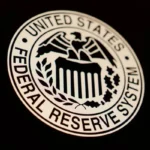
 Image Source: PixabayOwning is good, but I don’t want to own a perception or illusion. What we practice and preach is owning shares of high-quality companies that we have torn apart and looked at under the hood to know what is real, with no interest in fiction here. Johnson & Johnson (JNJ) is one that’s looking more attractive, notes Kelley Wright, editor of IQ Trends.Speculating, when successful, is exhilarating. Unfortunately, the long-term track record for building wealth from speculation isn’t the greatest. We aren’t actors and don’t play characters in a movie, but we do have a real-world approach that works if you have the patience and discipline to stick with it.
Image Source: PixabayOwning is good, but I don’t want to own a perception or illusion. What we practice and preach is owning shares of high-quality companies that we have torn apart and looked at under the hood to know what is real, with no interest in fiction here. Johnson & Johnson (JNJ) is one that’s looking more attractive, notes Kelley Wright, editor of IQ Trends.Speculating, when successful, is exhilarating. Unfortunately, the long-term track record for building wealth from speculation isn’t the greatest. We aren’t actors and don’t play characters in a movie, but we do have a real-world approach that works if you have the patience and discipline to stick with it. That brings me to Johnson & Johnson. It is the largest healthcare products firm in the world by sales, spanning pharmaceuticals, medical devices, and consumer products. The Innovative Medicine segment develops and markets a wide range of synthetic and biologic drugs.Johnson & Johnson’s most important therapeutic areas in Pharma are Immunology drugs that treat autoimmune diseases like Crohn’s Disease, psoriasis, and arthritis; Oncology drugs that treat tumors and other forms of cancer; Neuroscience drugs for disorders like depression or schizophrenia; and Infectious Disease drugs for Covid-19 or HIV.Pharmaceutical products are complex and difficult to develop, often consuming several years and billions of investment dollars only to be found ineffective in late-stage human trials or failing to pass regulatory approval hurdles. When this occurs, Johnson & Johnson can take large write-downs on in-process R&D assets.Despite these failure risks, Johnson & Johnson spends considerably on R&D ($15.1 billion in 2023, $14.6 billion in 2022), and most of its M&A spending goes toward acquiring companies with promising pipeline drugs.Frequent reinvestment in new drugs is needed to keep the pipeline full of potentially marketable drugs that can eventually replace existing drugs, which over time lose market share to competing treatments or become obsolete due to new ones.Johnson & Johnson’s Economic Book Value is $125.05 per share, and the ROIC, FCFY, and PVR are 13%, 11%, and 1.2 respectively.My recommended action would be to consider buying shares of Johnson & Johnson when the stock reaches an undervalued yield zone.
That brings me to Johnson & Johnson. It is the largest healthcare products firm in the world by sales, spanning pharmaceuticals, medical devices, and consumer products. The Innovative Medicine segment develops and markets a wide range of synthetic and biologic drugs.Johnson & Johnson’s most important therapeutic areas in Pharma are Immunology drugs that treat autoimmune diseases like Crohn’s Disease, psoriasis, and arthritis; Oncology drugs that treat tumors and other forms of cancer; Neuroscience drugs for disorders like depression or schizophrenia; and Infectious Disease drugs for Covid-19 or HIV.Pharmaceutical products are complex and difficult to develop, often consuming several years and billions of investment dollars only to be found ineffective in late-stage human trials or failing to pass regulatory approval hurdles. When this occurs, Johnson & Johnson can take large write-downs on in-process R&D assets.Despite these failure risks, Johnson & Johnson spends considerably on R&D ($15.1 billion in 2023, $14.6 billion in 2022), and most of its M&A spending goes toward acquiring companies with promising pipeline drugs.Frequent reinvestment in new drugs is needed to keep the pipeline full of potentially marketable drugs that can eventually replace existing drugs, which over time lose market share to competing treatments or become obsolete due to new ones.Johnson & Johnson’s Economic Book Value is $125.05 per share, and the ROIC, FCFY, and PVR are 13%, 11%, and 1.2 respectively.My recommended action would be to consider buying shares of Johnson & Johnson when the stock reaches an undervalued yield zone.
About the Author
Kelley Wright entered the financial services industry in 1984 as a stock broker, first with a private investment boutique in La Jolla, and later with Dean Witter Reynolds. In 1990, he left the retail side of the industry for private portfolio management. In 2002, Mr. Wright succeeded Geraldine Weiss as the managing editor of the Investment Quality Trends newsletter, as well as the chief investment officer and portfolio manager for IQ Trends Private Client.His commentaries have been published in Barron’s, Forbes, BusinessWeek, Dow Jones MarketWatch, The Economist, and many other business and financial periodicals. Mr. Wright is an active speaker at trade shows and investment conferences, and is a frequent guest and contributor to radio and CNBC. He is the author of Dividends Still Don’t Lie, which was published in February, 2010, by John Wiley & Sons, Inc.More By This Author:Markets Scorecard: Four Months Into The Year, Here’s Where Things StandTackling Options Trading Tactics, The Outlook For Tech, & 2024 Market TrendsAfter Sharp Pullback, Where Does Gold Go Next?














